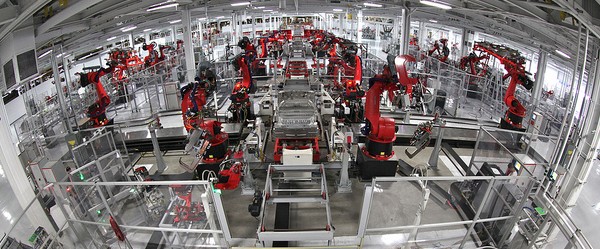The Internet of Things Means Business
post by Chris Curran on May 16, 2014According to a survey by the research arm of The Economist, businesses are slightly more likely to be using the Internet of Things for internal operations and processes than in external products or services. It’s important to draw a distinction between forward-facing IoT and what I call the Internet of Business Things (IoBT). The knowledge, skills and alliances it will take to instrument the business are different than outfitting consumer products with connected technology.
The IoBT is adding sensors to people, places, processes and products across the value chain to capture and analyze information to advance the goals of the organization. By mapping different sensor outputs to enterprise events, companies can take “business activity fingerprints.” These data-driven, digital impressions will enable companies to match actual sensor outputs with pre-tested business scenarios to prioritize and direct resources, improve workplace safety, reduce wasted effort, streamline product and people flows, strengthen relationships with customers and increase revenue.
We’re already seeing companies use sensors to track the movement of customers and the employees who interact with them. Sensors are determining inventory levels so businesses can replenish supplies on the fly. Machines are being developed to detect when an employee isn’t properly trained and shut down in response. Businesses are even embedding sensors into the ID badges of employees to study the dynamics of their interactions to build better teams.
The CIO is the ideal executive in the enterprise to drive conversations with other C-Suite executives as well as business unit leaders about the opportunities and challenges of pursuing the IoBT. Capitalizing on the full promise of the IoBT will require a deep knowledge of the business, data science skills and emerging technology talent. Here are a number of issues that CIOs need to consider as they educate enterprises on how to tap the power of the IoBT:
Mapping Sensors to Actions to Model Behavior
The CIO needs to help enterprises understand which business activities to track and why and how to map sensors to those actions and events to gain insight into operations. For example, if I’m a beverage manufacturer, what can I learn from placing a sensor on a refrigerator door? Knowing that the consumer opened and closed the door is one layer of information. But, if I combine motion sensors, product sensors and temperature sensors, I can gain a much deeper understanding of what’s happening. I can know a customer grabbed a particular item, the temperature of the refrigerator fluctuated and how much time transpired as the activity took place. I can also know the exact moment the refrigerator begins to malfunction. When approached strategically, sensors can empower enterprises to fine-tune their operations like never before.
Sensors Data Creates New Architecture Challenges
The IoBT will generate a staggering amount of data. Each sensor will produce readings multiple times a minute, thousands of times a day. Multiply that by 365 days a year. If you thought big data was already big enough, you haven’t seen anything yet, especially when it’s not immediately obvious how each sensor’s data will be used. When terabytes of data are piling up exponentially, how do you visualize it to make it useful? Sensors aren’t massive computers. How are you going to capture, store and crunch the data? What if you don’t own your environment? You’ll need to forward the data from sensors to a storage location, likely in the cloud somewhere, which makes the IoBT architecture much more complex. When considering your IoBT plan, you need to consider connectivity, cost and storage.
Collecting More Sensor Data, Means Making More Decisions
Collecting and analyzing data is only the first step. You need to be prepared to act based on what you learn. Putting a mobilization plan in place is equally important to gathering and processing data. You need to build strong relationships with the business to ensure the effort to collect and analyze the data isn’t wasted. Applying multi-disciplinary teaming - in which business strategy, operations, analytics and technology personnel work together closely and iteratively - is a great idea when tacking the question of the relationships between business measurement using sensors and the resulting value of the data.
Experimenting with Instrumentation
You can’t make a giant investment in IoBT without first exploring the inputs and outputs. Run experiments to understand the full scope of the undertaking. How frequently will you access the data? How will you store it, process it and analyze it? How many sensors do you need and what kinds of sensors do you need? Who do you need to share the information with and does that person’s team have the bandwidth to capitalize on what’s learned?
Has your company started to explore the IoBT? What challenges are you facing and how are you overcoming them?
Image shared by Steve Jurvetson

Pingback: 12 Hurdles Hampering the Internet of Things — CIO Dashboard()
Pingback: The Internet of Things Means Business | Richards Innovation Blog()